How to aerate a lawn – our step-by-step guide will help you achieve top results when completing this task
When done correctly, aeration can improve surface drainage, soil structure and overall lawn health
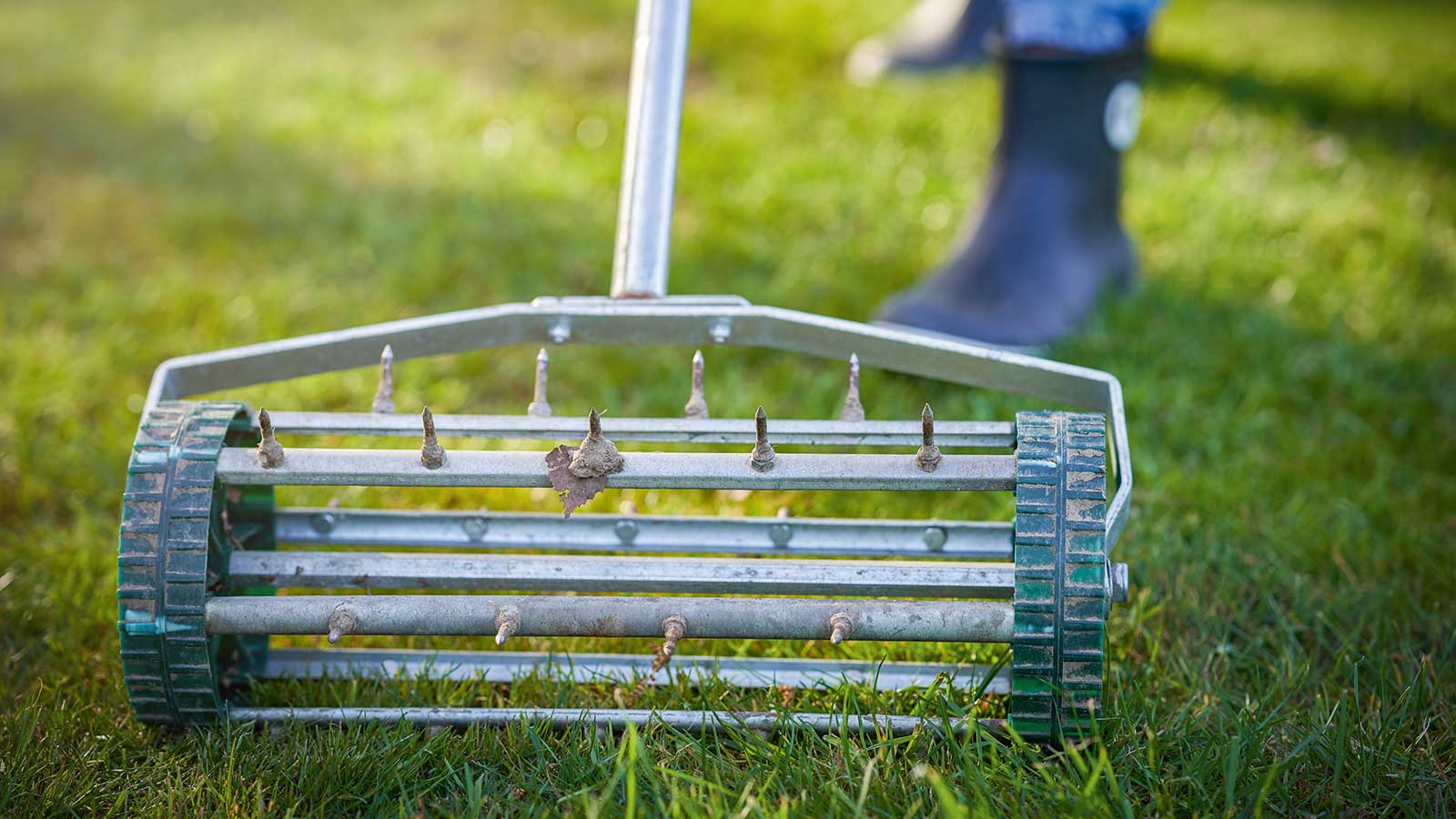
Aerating a lawn is an often-overlooked aspect of gardening that involves perforating the soil with small holes to allow air, water and nutrients to penetrate to the grass roots and improve the overall health of a lawn.
The main reason for completing this lawn care task is to tackle soil compaction, where too many solid particles in a certain volume or space prevent proper circulation of air, water and nutrients within the soil.
Although there are a number of tools you can use to complete this task, the general process of how to aerate a lawn remains roughly the same whether you are using a manual or electric tool, as our gardening experts explain in this step-by-step guide.
How to aerate a lawn in 4 easy steps
“Get the process right, and aeration is one of the simplest and most effective ways to reset your lawn,” says Jonathan Davis, lawn care expert at Lawnsmith. “It strengthens roots, improves drought tolerance, and sets the lawn up for a season of healthy growth.”
Adding this task to your autumn lawn care list is ideal if you want tackle it at the right time in your lawn care calendar.
- Mow the lawn
“Before aerating, mow the grass so that the grass blades are around an inch high," says Richard Barker, horticultural expert at LBS Horticulture. “Using a rake, scarify the lawn to remove any thatch, as this will make aeration much easier.”
“Giving your lawn a low cut to roughly 2-3 centimetres will help you to work cleanly and make it easier to see your pattern of work,” adds Jonathan Davis. - Choose your aerating tool
“Depending on the size of your garden, you may choose to use an electric aerator if you have a lot of ground to cover,” says Richard. “However, most gardens can be aerated with manual tools like a hollow tine aerator or a garden fork (see below for more tool advice).” - Pierce the lawn
“If you’re using manual tools to aerate your lawn, pierce the entire lawn surface with holes that are roughly five inches deep,” adds Richard. “Leave a gap of at least six inches between areas. Work across the lawn in vertical lines in the same way that you would when mowing, as this will ensure that you have not missed any areas.
Jonathan Davis agrees that working systematically across the whole lawn in straight, overlapping lines is the best approach. “On compacted patches, go over a second time at right angles,” he says. “A depth of five inches (about 12.5cm) is fine for garden forks. With hollow-tine tools, push them to their full depth each time and create closer spacing for best results.” - Focus on aftercare
After aerating, you will need to water the lawn so that the soil can absorb the moisture. “If you have removed soil plugs, you can either leave them to break down naturally or collect and compost them,” says Jonathan Davis. “Follow up with a light top dressing of sandy loam to keep the holes open and improve drainage.”

Jonathan Davis is the Lawn Care Expert at Lawnsmith, where he shares advice to help homeowners enjoy greener, healthier lawns. Passionate about the idea that a lawn should be both beautiful and practical, Jonathan champions lawns as spaces for play, summer barbecues, and everyday enjoyment.
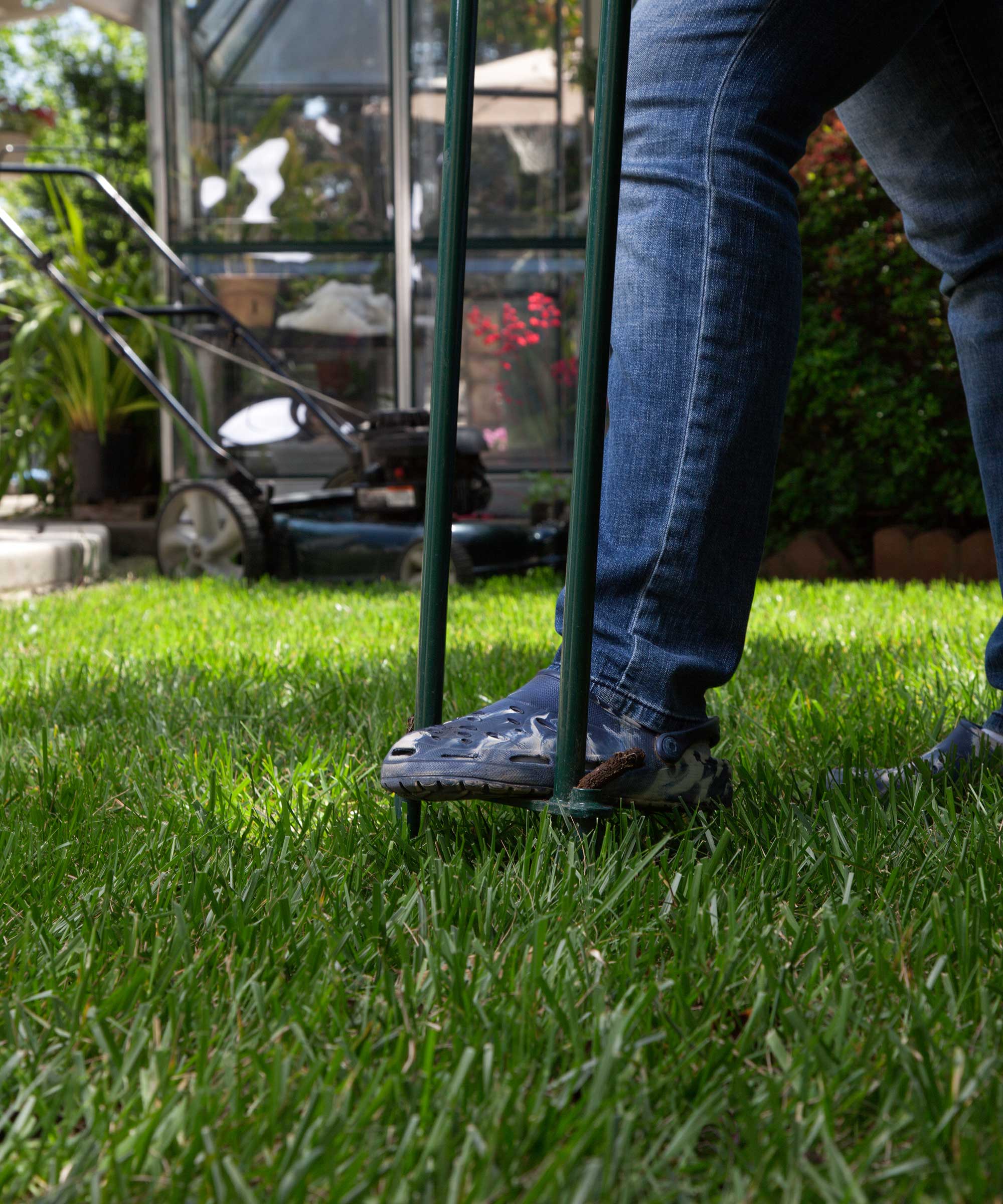
What are the best tools for aerating a lawn?
“It’s important to match the tool to the job,” says Jonathan Davis. “For light compaction and routine maintenance, a garden fork or a solid-tine spiker is fine.”
Chrissie Handley, lawn care specialist for Onlineturf.co.uk, agrees that if you have a small garden, then aerating with a garden fork might be all you need to do to help improve the drainage, rather than investing in an aerating machine. “Poking holes with a large garden fork all over the lawn will help increase the airflow to the soil and allows water to reach the lawn roots more easily," she says.
Bring your dream home to life with expert advice, how to guides and design inspiration. Sign up for our newsletter and get two free tickets to a Homebuilding & Renovating Show near you.
If you have a larger area and garden drainage is becoming a significant issue, a garden fork may not be enough to fix the problem, however. “For a lawn that is heavily compacted or in high use, I recommend using a hollow-tine aerator that removes soil plugs and creates lasting channels for air and water,” says Jonathan Davis. “For a larger lawn, a powered aerator or corer will save you valuable time.”
“Aerating machines work in a few different ways, depending on the type,” says Chrissie Handley. “You can get aerators that pull plugs deep from the soil, significantly improving airflow, but doing more cosmetic damage to your lawn. You can also use a spike aerator, which just pushes large holes into the soil with their rotating spikes. These are usually more common. If the expense of these types of machines puts you off, you can always rent one instead.”
If you are using an aerating tool that extracts soil plugs, Richard Barker advises leaving the excavated soil plugs on the surface of the lawn, as they will gradually break down and fill in the holes created by aerating.

Chrissie Handley is a lawn care specialist working for Online Turf. With extensive expertise in turf-laying, grass maintenance and seasonal gardening advice, she is dedicated to helping gardening enthusiasts achieve lush, healthy lawns year-round.
Shop lawn aerating tools
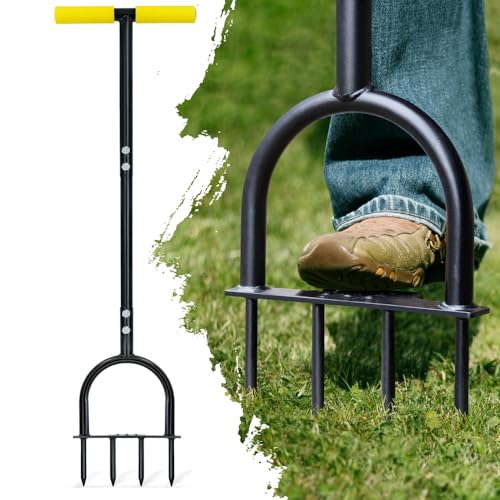
Featuring four metal spikes, this aerator features a wide foot plate so you can maximise the downward force. Also comes with a cushioned, non-slip handle to provide extra grip.
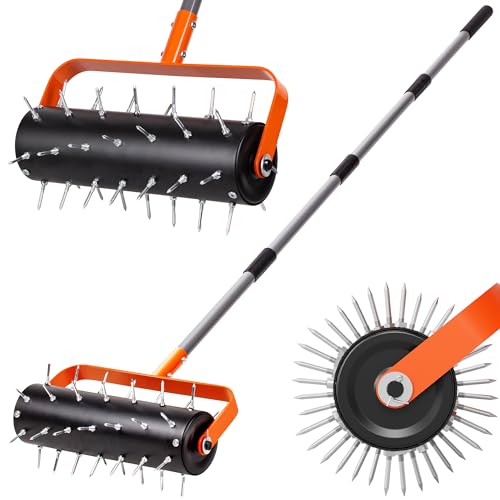
This manual, heavy-duty aerator tool has a grand total of 42 spikes to make light work of your lawn aeration tasks. The roller can also be filled with sand or stones to add extra weight, which allows the spikes to get deeper into the soil.
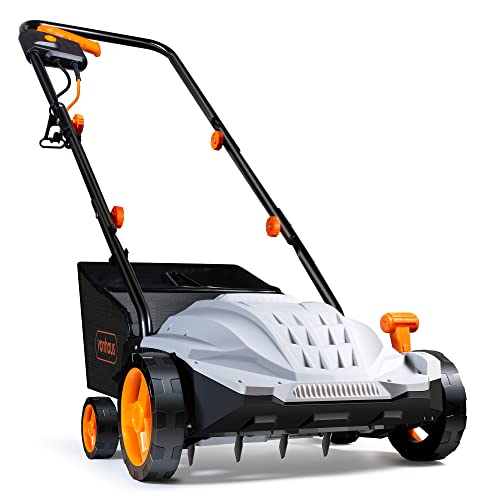
This electric multi-purpose buy is ideal for a wide range of lawn tasks including aerating, scarifying, dethatching and raking. It has a 30L collection box, four cutting heights and a 32cm working width.
Benefits of aerating a lawn
Aerating a lawn isn't merely about poking holes in the grass, it's about reinstating the balance of air and water in the soil. Ideally, soils should maintain around 25% water storage and 25% air space.
Natural occurrences like droughts or excessive rainfall can upset this balance, impacting soil structure. Aeration is the most effective method, aiding in improving surface drainage, soil structure, and facilitating the growth of grass through enhanced access to fertilisers, natural rainfall, and deeper root systems.
“Aeration or soil improvement stands as a cornerstone for any lawn, be it a croquet lawn or a wild meadow,” says David Hedges-Gower, chairman of The Lawn Association. “It fulfils the dream of maintaining a healthier growing medium for every lawn. Staying proactive is crucial, considering the unpredictability of nature. Hence, selecting the right operation tailored to your specific lawn needs is paramount.”
“Aerating not only improves your drainage and soil health, but can also help prepare your lawn for any overseeding you may want to do in autumn," says Chrissie Handley. “The mild climate and steady rainfall is perfect for overseeding and the aerated holes help the seed make good contact with the ground for successful germination.”

David Hedges-Gower is the UK's most trusted lawn expert. He is the chairman of The Lawn Association, an educational platform for homeowners, professionals and media. In addition, David also launched True Garden Range, the world's first 2-in-1 fertilisers and soil conditioners, made from composted recycled food waste.
“Aerating a lawn can be a hard and lengthy job if you have a larger lawn, so it may be best to focus on the worst areas or aerate a different patch of lawn each season,” says Richard Barker, horticultural expert at LBS Horticulture.
Scarifying the lawn is another task that can help to improve the overall look of your lawn longterm, ensuring you get longer, healthier grass.

Lifestyle journalist Sarah Wilson writes about garden design and landscaping trends. She has studied introductory garden and landscape design, and also has an RHS Level 2 qualification in the Principles of Plant Growth and Development. Sarah is a regular contributor to Homes & Gardens and Livingetc, and has also written for Modern Gardens, Country Living, and Country Homes & Interiors magazines.
